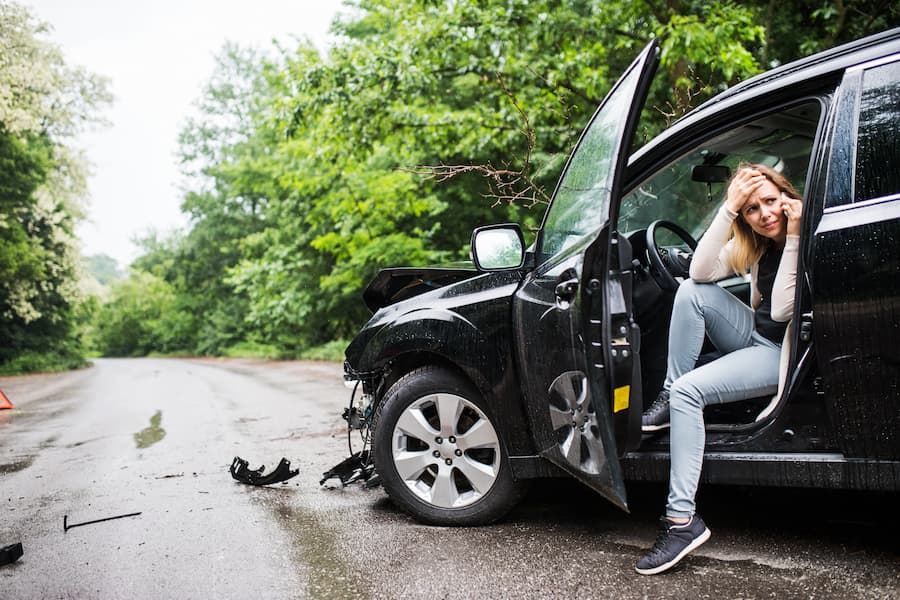Self-driving cars are no longer just a futuristic concept. They’re on the roads today, promising a new era of transportation. According to recent reports, there are expected to be roughly 3.5 million autonomous cars on the roads of the United States by 2025. And the market is projected to be valued at nearly $80 billion by 2030.
In other words, autonomous cars are here – and they here to stay.
However, as these vehicles become more common, they bring complex questions about liability in accidents. When an autonomous car is involved in an accident, determining who is at fault is not as straightforward as it is with traditional vehicles. The involvement of advanced technology and varying legal standards makes it challenging to pin down responsibility.
At Midwest Injury Lawyers, we provide our clients with an extensive understanding of their rights. Whether it’s a self-driving car accident or something else, our expert team is ready to serve.
Here’s how we approach the evolving world of self-driving technology.
Understanding Self-Driving Technology: How Do These Things Work?
First, you must grasp the basics of self-driving cars. Advanced driver assistance systems (ADAS) play a crucial role in the development of self-driving technology by providing the foundational features that enable higher levels of vehicle autonomy. Here’s a basic breakdown.
Levels of Autonomy
Self-driving cars operate at different levels of autonomy, ranging from basic driver assistance to full automation. The Society of Automotive Engineers (SAE) categorizes this autonomy into six levels:
- Level 0: No automation. The driver controls everything.
- Level 1: Driver assistance, like cruise control. The driver must still handle most tasks.
- Level 2: Partial automation, where the car can control steering and acceleration, but the driver must remain engaged.
- Level 3: Conditional automation. The car can manage most driving tasks, but the driver must take over when the system requests.
- Level 4: High automation. The car can handle all driving tasks in certain conditions, but a driver may still be required in others.
- Level 5: Full automation. No human intervention is needed at any time.
Autonomous vehicle technology has evolved significantly to support these varying levels of autonomy, with ongoing developments from major companies and evolving regulatory and legal frameworks.
Understanding these levels is crucial because liability can vary depending on the vehicle’s level of autonomy at the time of the accident.
Role of the Human Driver
Even in self driving vehicles with high levels of automation, the human driver is expected to remain attentive and ready to take control if needed. This expectation is particularly true for Level 2 and Level 3 vehicles.
If a driver fails to intervene during an emergency, they could be held liable for the accident. This responsibility complicates liability, as it raises questions about when and how a driver should step in.
Determining Liability in Self-Driving Car Accidents
Manufacturer Liability
In some cases, the vehicle manufacturer might be responsible for the accident. This liability usually comes into play if the accident was caused by a defect in the car’s design, software, or manufacturing.
For example, if a self-driving car’s software fails to recognize a pedestrian and this leads to an accident, the manufacturer could be held liable under product liability laws. These laws require manufacturers to ensure their products are safe for public use.
If a product is found to be defective and causes harm, the manufacturer may be responsible for damages.
Driver Liability
Despite the advanced technology in self-driving cars, drivers may still be liable in certain situations. If a driver misuses the autonomous system, such as by not paying attention to the road, they could be found at fault.
For instance, if a driver is watching a movie instead of monitoring the car’s performance, they could be held responsible if an accident occurs. The law still expects drivers to be engaged and ready to take control, especially in semi-autonomous vehicles.
Self driving vehicles have the potential to enhance safety on the roads by minimizing human error, but they also bring about legal implications. There is an ongoing need for legislative frameworks to address liability issues, including shifts from personal to manufacturer liability, and the evolving nature of insurance policies as autonomous technology becomes more prevalent.
Third-Party Liability
Sometimes, another party may be liable for the accident. For instance, in the case of autonomous cars, this third party could be another driver, a company responsible for maintaining the road, or even the manufacturer of a faulty traffic signal.
In these cases, determining fault requires a thorough investigation to identify all contributing factors. For example, if a self-driving car crashes due to a poorly maintained road, the entity responsible for road maintenance might share liability – which usually falls on the municipality.
Legal Challenges and Considerations
Current Illinois Law
Illinois law is still catching up with the rapid advancements in self-driving technology, particularly with the rise of autonomous vehicles. Currently, there are no specific statutes that fully address self-driving car liability, making these cases complex.
Generally, the state follows traditional liability laws, meaning that fault is determined based on negligence. However, as self-driving cars become more common, Illinois lawmakers may introduce new regulations to address these unique challenges.
Insurance Implications
Insurance companies are also grappling with how to handle claims involving self-driving cars, particularly in terms of liability insurance. Most policies still rely on determining human fault, which can be problematic in accidents involving autonomous vehicles.
If you’re involved in a self-driving car accident, it’s crucial to understand your policy and how it applies to these new scenarios. Some insurance companies may offer specific coverage for autonomous vehicles, but these policies are still evolving.
Future Legal Trends
As self-driving technology advances, the legal landscape will likely evolve to address the new challenges it brings. Future laws may include more specific guidelines on who is liable in self-driving car accidents, possibly shifting more responsibility to manufacturers. Additionally, insurance policies might become more nuanced to cover autonomous vehicles.
The impact of autonomous vehicle technology on future legal trends is significant, as ongoing developments from major companies and evolving regulatory frameworks necessitate a nuanced understanding of liability and safety considerations.
Staying informed about these trends can help you navigate potential legal issues if you’re involved in a self-driving car accident.
Steps to Take After a Self-Driving Car Accident
Similar to other car accidents, you must take certain steps if you’re involved in an accident with a self-driving car. Your reaction at this moment will help shape the best possible outcome for your future.
Documenting the Scene
Gather as much evidence as possible. This documentation includes taking photos of the scene, obtaining video footage if available, and collecting witness statements.
It’s also important to secure the car’s data, which can provide crucial information about the vehicle’s actions before the accident. This evidence can play a vital role in determining fault and supporting your claim.
Seeking Legal Assistance
Given the complexities of self-driving car accidents, consider consulting with an experienced car accident injury lawyer. A lawyer can help you understand the nuances of self-driving car liability and guide you through the legal process.
They can also assist in negotiating with insurance companies and, if necessary, represent you in court. Having a knowledgeable attorney on your side increases your chances of securing the compensation you deserve.
Filing a Claim
Filing a claim after a self-driving car accident can be complicated. The process involves determining who is at fault, negotiating with insurance companies, and potentially taking legal action. An experienced lawyer can help you navigate these steps and ensure that your rights are protected. They can also advise you on the best course of action based on the specifics of your case.
The Self-Driving Car Accident Playbook: Know Your Rights and Know What to Do

Determining fault in a self-driving car accident is a complex process that involves multiple factors, including the vehicle’s level of autonomy, the driver’s actions, and potential third-party involvement. As the legal landscape continues to evolve, stay informed about your rights and the potential challenges you may face.
If you’ve been involved in a self-driving car accident, Midwest Injury Lawyers is here to help. We can guide you through the complexities of your case and work to ensure you receive the compensation you deserve.
